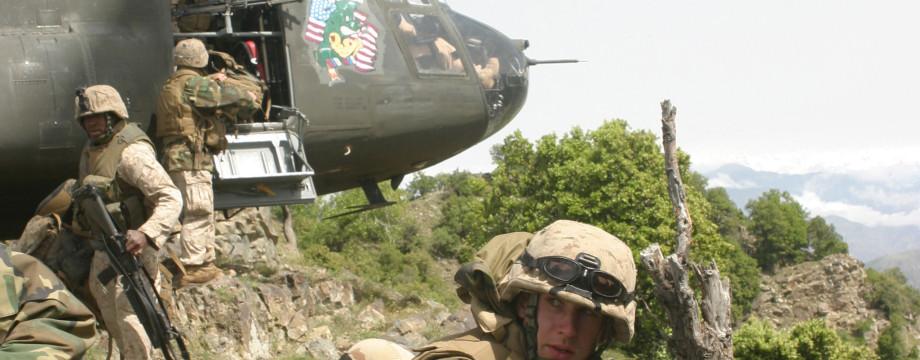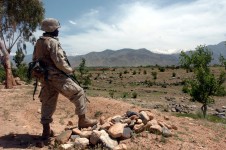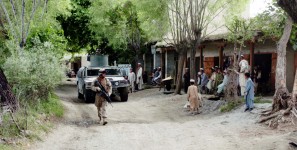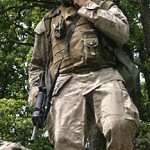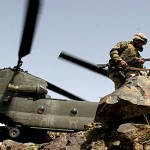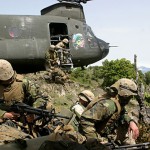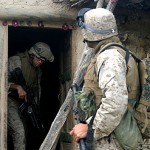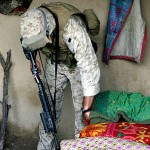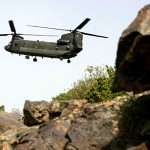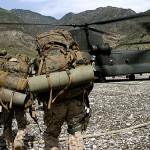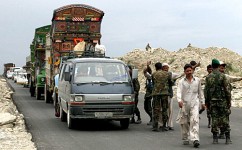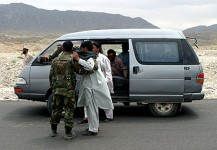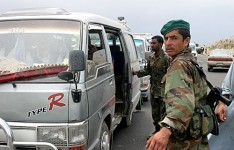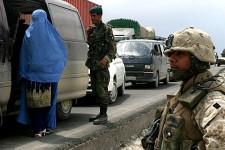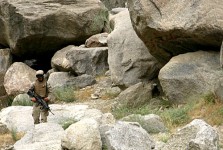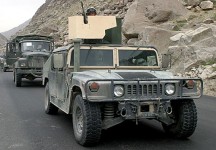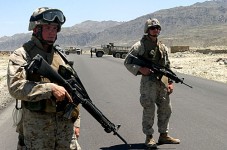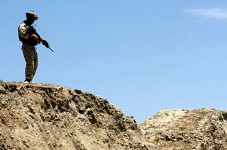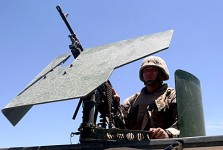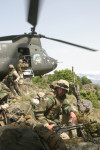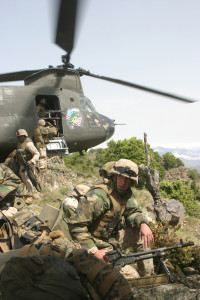 “Operation CELTICS commenced as Lima Company conducted targeted CMO in Southern Nangahar as the main effort as Kilo and India Company conducted numerous VCPs as supporting elements.” — Source: 3/3 Command Chronology for the Period 01 January to 30 June 2005
“Operation CELTICS commenced as Lima Company conducted targeted CMO in Southern Nangahar as the main effort as Kilo and India Company conducted numerous VCPs as supporting elements.” — Source: 3/3 Command Chronology for the Period 01 January to 30 June 2005
Contents
3/3 Chronology
Operation CELTICS commenced as Lima Company conducted targeted CMO in Southern Nangahar as the main effort as Kilo and India Company conducted numerous VCPs as supporting elements.
“During May, America’s Battalion’s priorities became: 1) Task force operations in support of CJTF-76 Operation DETERMINED RESOLVE (with the main effort being Operation CELTICS in the southern Nangarhar/Tora Bora region);
“Lima Company also continued security operations in the Nangarhar Province conducting VCPs along Highway One, particularly in the vicinity of the Khyber Pass, as part of shaping for Operation CELTICS.
“Based on the information battle, a perceptibly offensive battalion operation would have risked creating a situation that the AQAM could exploit. Because of this and the lack of actionable intelligence of AQAM presence in the Tora Boras, later phases of operation CELTICS were delayed and then modified. With the shaping phase complete, and the necessity of targeted detention negligible, the Battalion adjusted the rest of the operation by reinforcing Lima Company to conduct village assessments for targeted CMO, MEDCAPs, and Humanitarian Aid drops as the main effort along two suspected AQAM infiltration routes in southern Nangarhar. India Company, Kilo Company, and a platoon from Lima Company conducted Vehicle Checkpoints (VCPs) in order to control the major LOCs running from Pakistan toward Kabul through TAOR Trinity. Operation CELTICS placed a significant coalition signature in the Khogyani and Pachir Wa Agam Districts, but did not spark significant SIGINT activity on tactical or national assets. Although there are AQAM sympathizers and facilitators in those districts, it was proven unlikely that formal training camps or any related activity existed there as assessed by the CJTF-76 CJ2. The disposition of the people in Pachir Wa Agam was significantly pro-GOA/Coalition. The people there were waiting to see the results of the Phase III Alternative Livelihood Program to replicate the profits they lost in giving up poppy growing. The disposition of the people in Khogyani was tolerant of Coalition Forces and anti-District Government. Numerous people in the area felt terrorized by the current sub-governor, and they perceived that Governor Din Mohammed protected him. Dedicated airlift from TF Sabre allowed the main element for Operation CELTICS to reposition Marines and insert, as well as airdrop, CMO supplies into remote areas along tile targeted infiltration routes. Throughout the operation, America’s Battalion distributed over 38,000 pounds of food and equipment and provided medical assistance and supplies to an estimated 2,000 Afghans.” — Source: 3/3 Command Chronology for the Period 01 January to 30 June 2005
Timeline
20-24 May “India Company conducted VCPs and security patrols along the Asad Abad to Jalal Abad Road in the Narang, Chawkay, and Nurgal Districts, Kunar Province in support of Operation CELTICS.”
20-24 May “Kilo Company conducted VCPs along Hwy 1 in the Qarghayl District, Laghman Province in support of Operation CELTICS.”
20-24 May “Lima Company conducted village assessments, MEDCAPs that provided aid for approximately 2000 local nationals, HA distribution of over 135,000 lbs of equipment, and Mullah conferences in the Pachir Wa Agam and Khogyani Districts, the company also conducted VCPs along Hwy 1 in the Muhand District all in the Nangarhar Province in support of Operation CELTICS.” — Source: 3/3 Command Chronology for the Period 01 January to 30 June 2005
News
Marines Return to Tora Bora for Operation Celtics
By Sgt. 1st Class Rick Scavetta, USA
Special to American Forces Press Service
JALALABAD, Afghanistan, May 31, 2005 – When the U.S. Marine Corps’ 3rd Battalion, 3rd Marine Regiment, ventured into the Tora Bora mountains recently to hunt down enemy fighters, they instead found Afghans eager for a brighter future.
The mission, dubbed Operation Celtics, began as an offensive in an enemy sanctuary – the rugged mountains of Nangahar province that stretch along the Pakistan border. It was one of several missions launched last week by coalition troops to locate insurgents. Afghan National Army soldiers took part in the operations. “Lima” Company Marines were prepared for a fight, but found themselves sipping tea with village elders.
In the first few days of the operation, the Marines distributed roughly eight tons of civic aid. And not a shot was fired.
“It’s a sign of success that we’re not getting shot at,” said Capt. Eric Kelly, Company L commander.
Insurgents operating in the area would likely rely upon local villagers for support while transiting through the high-altitude passes, Kelly said. Marines patrolled into remote villages, set up security and talked with local citizens to assess their needs and gain information on enemy activity.
Keying the radio, Kelly called to battalion headquarters at Jalalabad Airfield, where aviation assets from the U.S. Army’s Company F, 3rd Battalion, 159th Aviation Regiment — known to troops as “Big Windy” — were on standby to airlift bundles of civic aid.
Within minutes, Marines heard the heavy “thud-a-thud” of the CH-47 Chinook echoing through the valley. A U.S. Air Force controller working with the Marines popped a canister of green smoke to mark the landing zone and talked to the approaching Army pilot. Marines rushed into the blowing dust to pull bundles of supplies off the helicopter’s back ramp.
“When fighting an insurgency, the way to win is to get the people on your side,” said 1st Lt. J.P. Sienicki, 25, of Long Valley, N.J. “When you’re handing out food and blankets to help people in this rugged, austere landscape, you’re helping out on the most personal level.”
Security during the mission was key, said Sienicki, Lima’s weapons platoon commander. The Marines were “set up for success” by having Air Force A-10 Thunderbolt II jet fighters overhead during the mission’s initial stage, he said. A platoon from the Afghan National Army marched alongside the Marines, contributing to interaction with the Afghan citizens and establishing perimeter security when the troops stopped near villages.
“If our Army works hard with the Americans and gets back on its feet, then we will no longer need the U.S. for support,” said Janet Ghul, an Afghan soldier from Chapahar province.
Ghul and his fellow Afghan troops use their knowledge of the local culture to assess progress during the military operations. Ghul recalled how the Russian soldiers stormed his home and killed his father. The coalition forces’ approach makes Afghans feel more comfortable, he said.
“Before, they did not like foreigners,” Ghul said. “Now they see (the United States) building the country, and they are happy.”
On a ridge overlooking the Pachir Agam valley, Marines set up camp outside the Gerakhil Primary School, a 12-room edifice built in 2004 by a U.S.-led provincial reconstruction team. About 700 local boys who once studied out in the open now have furnished classrooms, said Capt. Michael Greer, 35, an Army Reserve officer from the 450th Civil Affairs Battalion.
“You build a school, and you make people choose,” Greer said. “It’s either help from the Afghan government and its coalition allies or supporting the bad guys.”
Nearby, Afghan villagers clustered around the helicopter landing zone. Sgt. Joshua Allison, of Stroudsburg, Pa., spent the afternoon of his 23rd birthday loading the arms of Afghan boys with bundles of blankets, rugs, food and medicine. In the village, Navy Corpsman Daniel Mayberry, 21, of Gaithersburg, Md., began treating ailments and injuries in a makeshift clinic.
“We’re trying to better this country’s problems and let them know we care,” Mayberry said. “The local people are trying to get on with their everyday lives, and there’s people – Taliban and al Qaeda – threatening their lives. If we show them that we’re here to help, they may tell us where’s the bad guys with the weapons.”
Gaining the locals’ trust is the only way to get their support, said Cpl. Stephen Patterson, 22, of Conyers, Ga.
Patterson often mans a 60 mm mortar on Marine firebases. But when he gets out on patrols, he sees the Afghanistan’s future in the droves of children who swarm around Marines.
“There’s something about kids,” Patterson said. “Their parents saw what other foreign armies did here, but the kids are exposed to the way we are doing things. Maybe they can tell their parents about what we’re doing, and remember what we’ve done for them.”
(Army Sgt. 1st Class Rick Scavetta is assigned to the Combined Joint Task Force 76 public affairs office.)
Source: American Forces Press Service
Photographs
- Mikkel Boiser
- David Stanfield
- Tracy Hall
- Robert Vasquez
- Gabriel Rudner and Jeremy Bingham
- Joe Gazzam
- Nestor Davila
